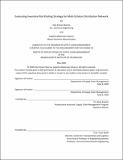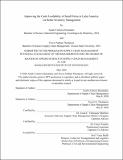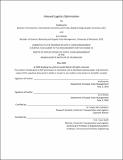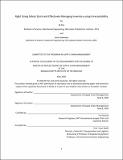Browsing Supply Chain Management Capstone Projects by Subject "inventory management"
Now showing items 1-6 of 6
-
Data Aggregation for Data Analytics in Medical Device Supply Chains
(2020-07-30)Product visibility in the medical device supply chain is a challenge for suppliers, distributors, and hospitals. The lack of visibility makes managing inventory complex, and it is made more difficult when businesses have ... -
Evaluating Inventory Risk Pooling Strategy for Multi-Echelon Distribution Network
(2020-08-06)Rising inventory costs is an ongoing challenge for any firm. These costs are of special significance to retail firms like Coppel, whose inventory investments are typically high and margins are slim. Inventory risk pooling ... -
Improving the Cash Availability of Small Firms in Latin America via Better Inventory Management
(2020-07-30)In Latin America, micro, small, and medium firms represent about 99% of businesses and more than 70% of employment, according to the Organization for Economic Cooperation and Development. Despite their number, these firms ... -
Inbound Logistics Optimization
(2020-08-06)The intrinsic competitive nature of the fast-moving consumer goods (FMCG) industry have made it a priority for companies to maximize profitability by aggressive cost-cutting measures in the context of growing material cost, ... -
IoT-Based Inventory Tracking in the Pharmaceutical Industry
(2020-08-06)Inventory visibility has been a primary concern for corporate supply chains for decades. Utilizing inventory location and time data is particularly important for pharmaceutical companies, as is the sponsor, that have an ... -
Right Sizing Safety Stock and Effectively Managing Inventory Using Forecastability
(2020-08-06)In a commodity consumer product business, such as bottled water, the customer has the power. Therefore, the business incurs whatever cost necessary to meet demand. To reduce the cost of fulfilling demand and of stockout, ...





